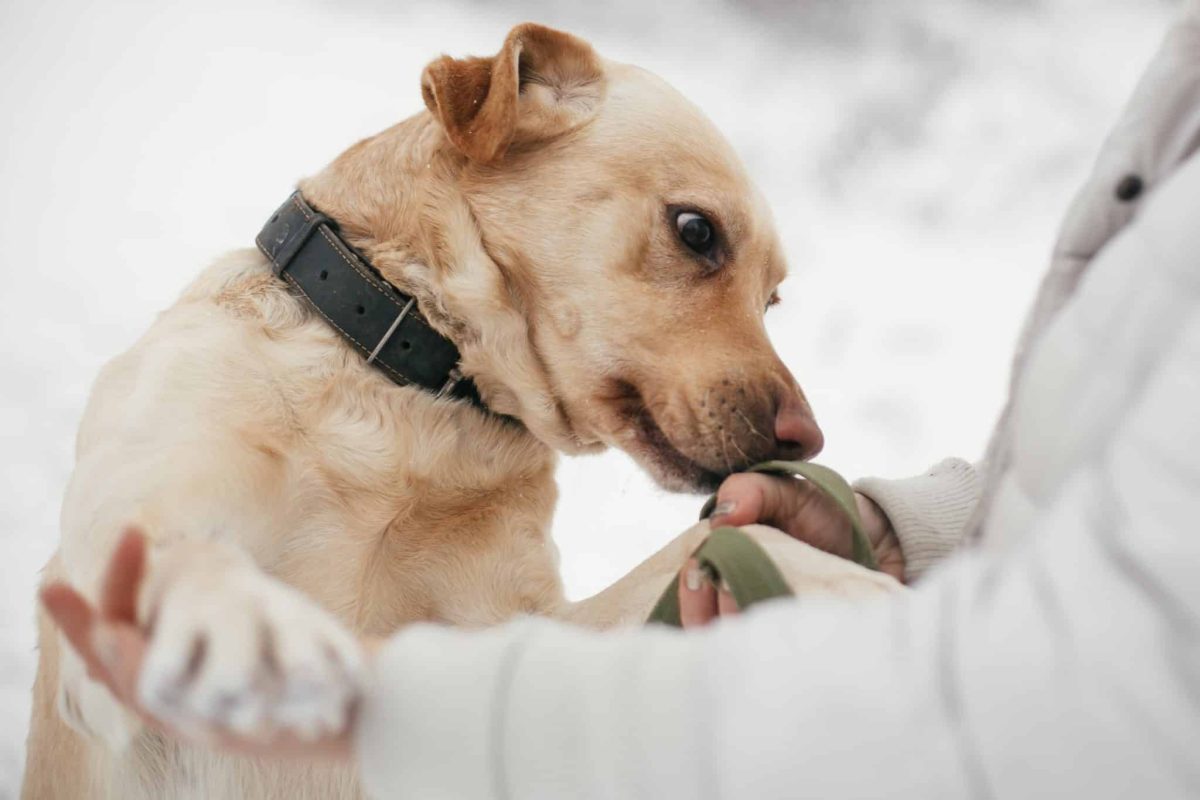 Shutterstock
Shutterstock
Dogs have been loyal companions to humans for thousands of years, and their bond with us goes beyond cuddles and playtime. Many dog owners can recall moments when their dogs seem to understand exactly what they’re saying. Dogs often surprise us with their ability to “listen” and react as though they fully comprehend our speech. In some cases, it feels as if they’re not just hearing us—they’re actively engaging with us on a deeper, more meaningful level, strengthening the connection we share.
The Look of Recognition
 Shutterstock
Shutterstock
There are moments when dogs appear to understand certain words or phrases, and their reactions are nothing short of impressive. Take the classic scenario when you say, “Do you want to go for a walk?” The second those words leave your lips, the dog’s ears perk up, and they begin jumping around, clearly showing excitement. It’s as though they not only recognize the question but also understand the intent behind it. Dogs are highly attuned to our tone and body language, and this deep awareness helps them grasp the meaning of specific words.
Understanding Daily Routines
 Shutterstock
Shutterstock
Dogs are keen observers of our daily routines and often know exactly what comes next based on the words we say. Many dog owners experience the phenomenon of their dogs reacting to certain words or phrases tied to specific activities. For example, the sound of a leash being grabbed or the phrase “Dinner time!” can send a dog into a frenzy of excitement. It’s not just the repetition of the word; it’s the understanding of the sequence of events. Over time, dogs learn the pattern and start anticipating what’s to come based on the words associated with those actions.
Reacting to Emotional Cues
 Shutterstock
Shutterstock
Dogs are known for their remarkable sensitivity to human emotions, and they seem to understand our feelings on a deeper level. When a person is sad, frustrated, or anxious, many dogs respond by sitting close, licking their owners, or even nuzzling them for comfort. This intuitive behavior goes beyond simple empathy—it suggests that dogs can pick up on verbal cues, such as the tone of voice, and react accordingly. Whether we’re upset or excited, dogs often seem to match our emotional states, as if they truly understand what we’re saying emotionally, even if the words aren’t directly spoken.
Recognizing Commands
 Shutterstock
Shutterstock
One of the most obvious ways dogs show they understand our words is through their ability to follow commands. Whether it’s “sit,” “stay,” or “come,” dogs quickly learn the meaning of these phrases, and many can follow them with remarkable precision. What’s truly fascinating is how they seem to recognize these commands, not just as isolated words, but in the context of our body language and tone of voice. This combination of verbal and non-verbal communication allows dogs to understand exactly what is being asked of them, making it feel like they understand every word we say.
Getting Ready for Playtime
 Shutterstock
Shutterstock
Playtime is a significant part of a dog’s daily routine, and many dogs know exactly what words signal the start of a fun-filled session. Saying things like “Fetch,” “Ball,” or even “Playtime” can send a dog into a frenzy of excitement. These words are often followed by the dog eagerly running to their toys or getting into position for a game of chase. It’s as though the dog understands that the words are an invitation for play, and they eagerly respond to the cue.
Understanding Names
 Shutterstock
Shutterstock
One of the most basic but impressive ways dogs seem to understand what we’re saying is through their recognition of their names. This is often the first word that a dog learns, and they quickly connect the sound of their name with their identity. When you call your dog’s name, they’ll usually look at you or approach you, acknowledging that they’ve heard and understood. This form of communication is one of the clearest examples of dogs understanding not just words, but the concept of identity tied to those words.
Reacting to Changes in Tone
 Shutterstock
Shutterstock
Dogs are highly sensitive to changes in our tone of voice, and this ability allows them to respond appropriately to our moods and emotions. When we speak in a calm, soothing voice, they often respond with relaxed behavior, while a sharp or angry tone can cause them to act cautiously or retreat. It’s as if dogs have an innate understanding of the emotional weight behind our words, recognizing when something is different based on the tone alone. This emotional intelligence demonstrates that dogs don’t just understand the words—they grasp the underlying emotions as well.
Knowing the Difference Between Questions and Statements
 Shutterstock
Shutterstock
Another intriguing way dogs seem to understand human language is by recognizing the difference between questions and statements. When we ask, “Do you want a treat?” dogs often become visibly excited and may start running toward the treat jar or the kitchen. On the other hand, if we simply say “I’m getting a treat,” the reaction is typically less enthusiastic. This distinction suggests that dogs understand the difference between a query and a statement and can react based on the context of the words spoken.
Hearing Specific Words Across Distances
 Shutterstock
Shutterstock
It’s not uncommon for dogs to respond to words even when they’re far away. For example, when you call your dog from another room and say “Come here,” they’ll often trot over to you with an eager expression. The fascinating thing is that dogs can discern specific words, even when other background noise is present. Their acute hearing and ability to focus on key words make it seem like they have an uncanny understanding of our speech, no matter the distance.
Reacting to Emotional Support Words
 Shutterstock
Shutterstock
Dogs are incredibly in tune with their owners’ needs, and when it comes to offering emotional support, certain words seem to trigger a deeper level of understanding. Words like “Comfort,” “It’s okay,” or “Good boy/girl” can immediately put a dog at ease. When you use comforting words in a soothing voice, dogs seem to calm down and respond with more relaxed behavior. It’s as if they understand that these words are meant to provide reassurance and comfort, which is why they often react in such a supportive way.
Recognizing Names of Family Members
 Shutterstock
Shutterstock
Dogs not only recognize their names but also become familiar with the names of other family members. When you mention a family member’s name, dogs often perk up their ears or look toward that person, demonstrating that they associate the name with the individual. Over time, dogs learn the names of people they interact with regularly and can often react accordingly when those names are mentioned. This shows that dogs are not just hearing words—they’re actively processing the information and connecting it to real-life people.
Reinforcing Boundaries
 Shutterstock
Shutterstock
Dogs also seem to understand words related to boundaries or rules. When you say things like “No,” “Off,” or “Stay,” many dogs quickly learn what behaviors are acceptable and which ones aren’t. This ability to comprehend boundaries and limitations is a clear indication that dogs can follow not only commands but also social cues and rules associated with living in a household. It’s like they understand the “language” of acceptable behavior, helping them adapt to family life with ease.
Reacting to Tone of Urgency
 Shutterstock
Shutterstock
Dogs are highly attuned to the tone of voice we use in various situations. When we speak with urgency or command, words like “Hurry” or “Now” are often understood as signals to act quickly. If you shout “Come here, now!” in a serious tone, your dog will typically stop what they’re doing and rush toward you. This suggests that dogs not only understand the words but also gauge the urgency based on the emotional tone we convey.
Responding to Phrases of Affection
 Shutterstock
Shutterstock
Phrases of love and affection often prompt dogs to display their own affection in return. When you say things like “I love you” or “Cuddle time,” many dogs will respond by curling up next to you, licking your face, or snuggling close. They seem to recognize these words as signals of closeness and connection, and their actions suggest they understand the sentiment behind the phrases. This further demonstrates how dogs connect with us on an emotional level, grasping not just our words but our feelings.
Understanding Travel Plans
 Shutterstock
Shutterstock
Dogs are highly intuitive when it comes to understanding when it’s time for travel. When you say, “Let’s go for a ride” or “Car trip,” many dogs will run to the door, eager to join the adventure. The recognition of travel-related words shows how well dogs can grasp context, even when it’s not directly tied to the immediate environment. Their excitement isn’t just from the act of traveling, but from understanding the situation the words represent.
The Canine Secret Society Of Human Linguists
 MidJourney
MidJourney
Dogs have an extraordinary ability to understand us. While we may never fully know the extent of their comprehension, the bond between humans and dogs only strengthens with time. The next time you talk to your dog, don’t be surprised if they seem to understand every word. They might just surprise you with how much they truly grasp, showing that their connection with us goes much deeper than we might expect, creating a bond that’s more profound than we realize.

 1 month ago
20
1 month ago
20


















 English (US) ·
English (US) ·